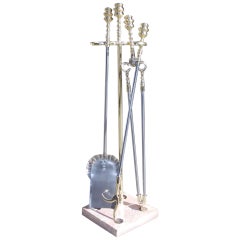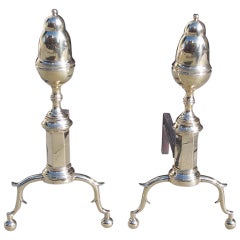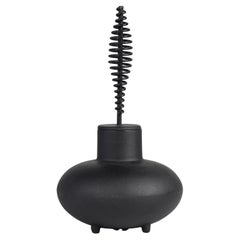American Fireplaces and Mantels
to
17
478
242
235
6
Height
to
Width
to
39
29
12
10
9
6
4
2
2
2
1
1
1
29
131
75
248
16
30
14
4
1
1
5
3
5
8
10
3
1
376
277
119
52
48
195,718
4,870
2,462
1,626
1,294
483
251
257
34
6
3
2
2
Place of Origin: American
Set of American Brass and Polished Steel Tools on Marble Stand. Circa 1830
Located in Charleston, SC
Set of American brass and polished steel tools on marble stand. Set includes shovel, tongs, and poker.
Category
19th Century Antique American Fireplaces and Mantels
Pair of American Acorn Top Andirons. Philadelphia, Circa 1800
Located in Charleston, SC
Pair of American acorn top andirons with turned faceted plinths, terminating on double spur legs with ball feet. Philadelphia, Circa 1800
Category
19th Century Antique American Fireplaces and Mantels
Irving Harper Fire Starter by George Nelson Associates for Howard Miller
By Howard Miller, Irving Harper, George Nelson
Located in Los Angeles, CA
Designed by Irving Harper under George Nelson Associates for Howard Miller c. 1950s, USA. The footed cast iron pot features a coiled-handle and white firing stone that shows minimal ...
Category
1950s Mid-Century Modern Vintage American Fireplaces and Mantels
Materials
Iron
Read More
24 Perfect Patios with Fire Pits and Fireplaces
In these stylish spaces, the outdoor season extends year round.
40 Spectacular Spaces Warmed by Fireplaces
As the days grow colder, the desire to gather around the fire grows stronger. Take a peek at these well-appointed rooms featuring extraordinary sculptural and historic fireplaces.
Tour the Wabi-Sabi New York Apartment of Andrianna Shamaris
As her sun-filled home reveals, the furniture maker and dealer puts a contemporary spin on antiques from around the globe.
April’s Most-Liked Interiors on Instagram
Our feed is filled with the world's most beautiful spaces. See the 10 our followers have deemed the best of the best this month.
Recently Viewed
View AllMore Ways To Browse
Mid Century Gas Fireplace
Minton Fireplace Tiles
Original Victorian Marble Fireplace
Pierre Veritable
Scottish Baronial
Slate Fireplace Surround
Used Malm Fireplace
Used Wood Heaters
Vintage Montgomery Ward Furniture
Viola Marble Fireplace
Violette Brescia Marble Fireplace
Wedgwood Fireplace
Antique Brass Fire Surround
Antique Cast Iron Fireplace Mantle
Antique Cast Iron Heater
Antique Fireplaces Northern Ireland
Antique Marble Fireplace Circa 1800
Architectural Salvage Fireplace


